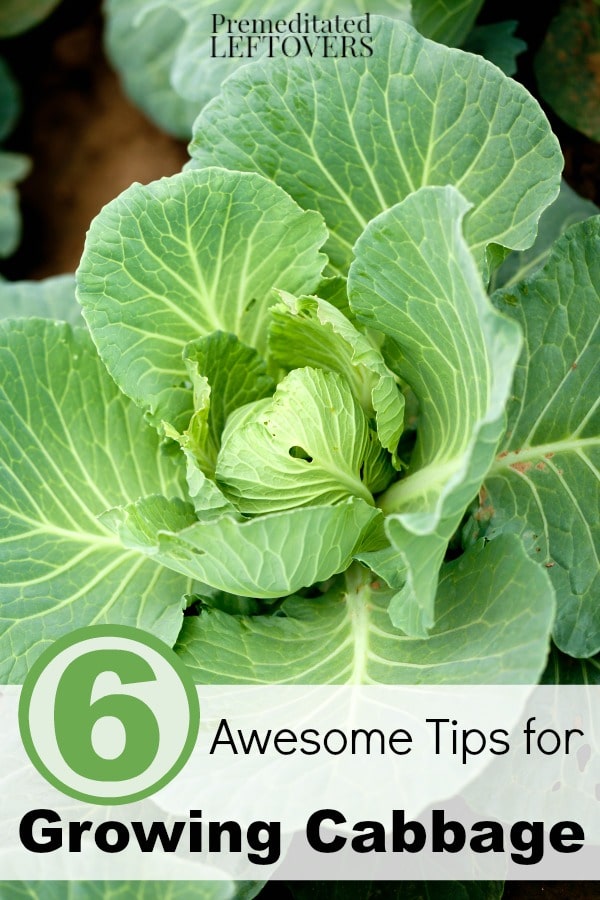Use these tips for growing cabbage in your garden to add cabbage to your cold-weather crops.

Do you like having cabbage in your salads? Maybe you love to make homemade sauerkraut! However you like to eat cabbage, your cabbage-based recipes are sure to be extra tasty if you’re using cabbages you grew in your own backyard! Cabbages can be somewhat tricky to grow, but if you know what you’re doing you can grow a big crop! Before you start working on your cabbage crop this year, take a look at these 6 Awesome Tips for Growing Cabbage!
6 Awesome Tips for Growing Cabbage
1. Start seeds indoors. With some plants, you can plant their seeds right outside. If you’re hoping to grow great cabbages, it’s usually a better idea to start their seeds inside then transplant them outside. You should start the seeds when there are 6-8 weeks left before the last frost of spring. It should be safe to plant them outside 2-3 weeks after the last expected frost date has passed.
2. Provide nitrogen-rich soil. Cabbages love nitrogen! To give them the best chance at success, plant them in soil that’s already nitrogen-rich. If your soil doesn’t have enough nitrogen, add compost, manure, or a nitrogen-rich fertilizer before you plant your cabbages. The soil should also have a pH of 6.5-6.8. It’s a very narrow range, but it’s what cabbages prefer, and it can help reduce their risk of developing clubroot disease.
3. Water plants often. To grow great cabbages, you need to keep you cabbage plants consistently moist. The plants need to get 1- 2 inches of water each week, possibly more if it’s very hot and sunny every day. Mulch can help keep the ground moist in between your watering visits and can also help keep the ground cool around the base of the plant. If you wanted to, you could install a drip irrigation system to keep your cabbages consistently watered without you having to remember to check on them all the time.
4. Provide adequate space. Some varieties of cabbage grow huge! So make sure to give them plenty of space in your garden. 1-2 feet between each cabbage is a good number for most varieties. If the cabbages are too close, they won’t grow their heads as large as they could. If you see any growing too close, transplant some of them to other areas of your garden so that each cabbage has enough space.
5. Avoid planting near relatives. Just because two plants are relatives doesn’t mean they’ll do well next to each other! To give your cabbages the best chance of succeeding, don’t place them next to broccoli or cauliflower, their close relatives. They tend to drain the same nutrients from the soil, meaning that they could wind up competing with one another. They also may share the same diseases, or attract the same harmful insects. So to allow all of them to flourish, keep them separate.
6. Check before you harvest. Just because your cabbage has grown a large head doesn’t mean it’s ready to harvest just yet! If you’ve been working to grow great cabbages, don’t throw away all your hard work by harvesting too early. Instead, give each cabbage head a squeeze. If the head feels loose, it needs more time. If it feels firm, then it’s ready to be harvested. Depending on what variety you’re growing, some cabbages can wait a bit to have their heads harvested. Others should be harvested as soon as they’re ready.
More Gardening Tips:
Tips for Growing Cabbage in your Garden
10 Tips for Growing Vegetables
7 Raised Garden Bed Ideas Anyone Can Build
DIY Natural Weed Sprays for your Backyard Garden
Thanks Savanna for sharing your gardening tips!

Leave a Reply